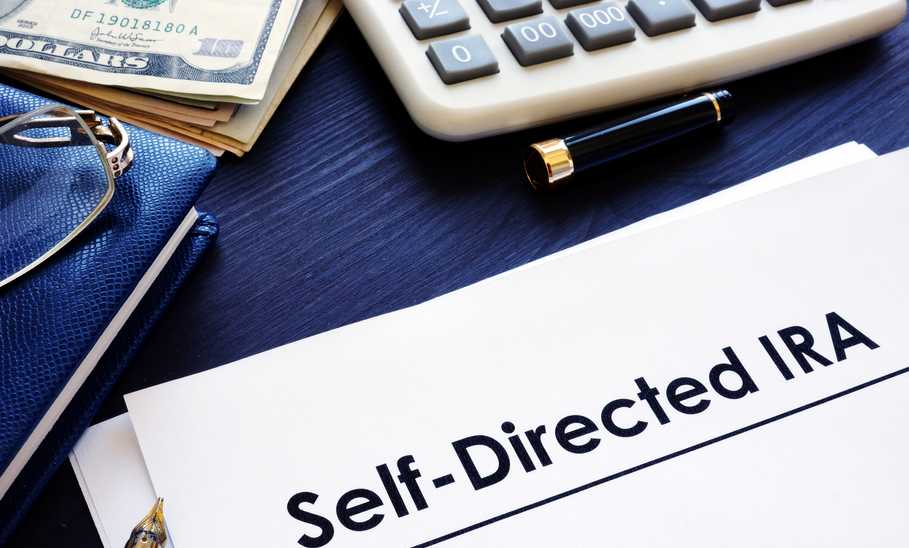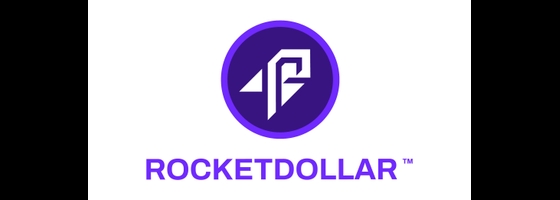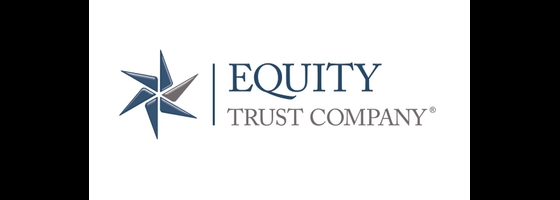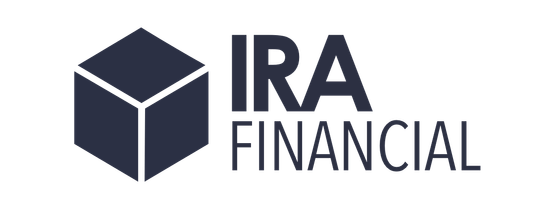- Low monthly fees.
- Automatically sets up checkbook control.
5 Best Self Directed IRAs for February 2025

Our evaluations and opinions are not influenced by our advertising relationships, but we may earn a commission from our partners’ links. This content is created by TIME Stamped, under TIME’s direction and produced in accordance with TIME’s editorial guidelines and overseen by TIME’s editorial staff. Learn more about it.
Mainstream brokers don’t offer SDIRAs, partly because non-traditional assets are riskier than the usual stocks, bonds, and funds comprising most IRAs. Instead, you’ll need to work with a specialized SDIRA custodian to invest in alternative assets with your retirement savings. Here are five options to consider.
$360 setup fee + $15 monthly fee
$600 setup fee + $30 monthly fee for checkbook IRA
$0, $37.50, or $100 quarterly account fee, depending on total invested capital
Crypto IRA has a 1% trade fee
Founded in 2018, Alto IRA offers an SDIRA for alternative assets like real estate and private equity, plus a cryptocurrency IRA with one of the largest selections of any crypto IRA on the market. Through Alto’s integration with cryptocurrency exchange Coinbase, you can access 200+ cryptocurrencies with a competitive 1% transaction fee and zero hidden fees.
$50 setup fee + annual fee of $199 for one asset or $299 for two or more if the account value is under $50,000
$50 setup fee + annual fee of $199 + 0.15% for one asset or $299 + 0.15% for two or more for assets over $50,000
$0 setup fee + $460 annual fee
$999 setup fee + $460 annual fee for checkbook IRA
| Company | Best for | Fees | Minimum | Promotion |
|---|---|---|---|---|
Rocket Dollar | Overall | $360 setup fee + $15 monthly fee; $600 setup fee + $30 monthly fee for checkbook IRA | $0 | Save up to $180 per year on monthly subscriptions and $300 on setup fees when you open multiple accounts |
Alto IRA | Cryptocurrency | $0, $37.50, or $100 quarterly account fee, depending on total invested capital; Crypto IRA has a 1% trade fee | $10 | N/A |
The Entrust Group | Online platform | $50 setup fee + annual fee of $199 for one asset or $299 for two or more if the account value is under $50,000; $50 setup fee + annual fee of $199 + 0.15% for one asset or $299 + 0.15% for two or more for assets over $50,000 | $0 | Earn up to $500/year referring new clients. |
Equity Trust | Real estate | $50 to $75 setup fee + $225 to $2,250 annual fee, depending on portfolio value | $500 | Earn up to $500/year referring new clients |
IRA Financial | Foreign currency | $0 setup fee + $460 annual fee; $999 setup fee + $460 annual fee for checkbook IRA | $0 | N/A |
To create our list, we reviewed a dozen SDIRA custodians and selected the top five based on factors like fees, investment options, customer service, experience, and reputation.
There are several factors to consider when choosing an SDIRA custodian, including:
We also recommend reviewing the SDIRA investor alert from the U.S. Securities and Exchange Commission (SEC) so you understand the risks and know the red flags to watch for.
You don’t need an SDIRA to invest in alternative assets. Instead, you can access non-traditional investments via mutual funds and exchange-traded funds (ETFs), which you can trade through a taxable brokerage account or investing platform. For example, you can buy shares in a real estate investment trust (REIT) or a gold ETF.
However, these other avenues don’t offer the same tax benefits as nontaxable retirement accounts. Investment earnings and capital gains in non-retirement accounts are taxable in the calendar year in which they occur.
Self-directed IRAs are structured like standard IRAs, with the same contribution limits, withdrawal rules, and tax advantages. However, SDIRAs let you invest in a broader set of assets than most IRAs permit, including real estate, precious metals, cryptocurrency, and private equity. For this reason, SDIRAs can offer greater flexibility, broader diversification, and higher potential returns than their conventional counterparts.
SDIRAs are not intended for investors interested in holding traditional assets like stocks and mutual funds in their IRAs. Instead, SDIRAs are for those wanting access to alternative investments like real estate, private equity, and commodities.
Mainstream brokers don’t offer SDIRAs. Instead, you’ll have to go through a specialty SDIRA custodian that provides access to alternative assets.
Once you choose a self-directed IRA company, you can set up the SDIRA as either a traditional IRA or a Roth IRA. While there are a few differences between traditional and Roth IRAs, the most significant is the timing of the tax benefits. With traditional IRAs, your contributions may be tax deductible, depending on your filing status, income, and whether you or your spouse has a retirement plan at work.
Contributions and earnings grow tax-free, and then you pay taxes on withdrawals. Roth IRAs don’t offer an upfront tax break, so you can’t deduct your contributions. However, your contributions and earnings grow tax-free, and qualified distributions are also tax-free.
The contribution limits are the same for all types of IRAs. For 2024, you can contribute up to $7,000—or $8,000 if you’re 50 or older. Note that these limits are the combined maximum you can contribute to all your IRAs.
After you fund the SDIRA, you can choose the investments it holds. Unlike regular IRAs, self-directed IRAs can hold alternative assets, including real estate, cryptocurrency, precious metals, and private company shares. Keep in mind that alternative assets have complex guidelines and tax implications. Working with a financial advisor and tax professional experienced with SDIRA investing can help you navigate the process and ensure you follow the rules.
The IRS frowns on prohibited transactions, including any improper use of an IRA account by the IRA owner, their beneficiaries, or a disqualified person, including the IRA owner’s fiduciary and family members.
Because an IRA is meant to benefit you when you retire, you (and other disqualified persons) are not allowed to benefit from anything the IRA does. For example, you can’t borrow money from the SDIRA, sell property to it, use it as security for a loan, or use it to buy property for personal use. Nor can you furnish goods or services for a property held in your SDIRA (e.g., you can’t fix a leaky faucet in your rental property; you have to pay someone else to do it). In other words, any action that benefits you or a disqualified person is forbidden.
The consequences for prohibited transactions are steep. There’s an initial 15% penalty tax on the amount involved, plus an additional 100% tax if you don’t correct the transaction within a set period. Moreover, a prohibited transaction could sometimes mean the SDIRA loses its tax-advantaged IRA status, with all its assets considered distributed. It’s essential to avoid prohibited transactions and self-dealing so your SDIRA can do what it’s supposed to: Help you save for retirement and grow your wealth.
Individuals can opt for a traditional or Roth SDIRA. For small business owners, SEP IRAs, SIMPLE IRAs, and solo 401(k)s can also be self-directed.
SDIRAs have a few advantages (and disadvantages) compared to standard IRAs.
An SDIRA must be held by a custodian, which could be a bank, licensed trust firm, or another entity the IRS allows to serve in a custodial capacity. Once you find a custodian, you’ll open an account, pay any one-time setup fees, and contribute funds so you can start investing.
By definition, SDIRAs are self-directed, so your custodian can’t give you any financial advice or guidance. For this reason, you’ll need to perform your own due diligence when choosing investments. Consider working with a financial advisor if you need help picking or managing your investments.
Self-directed IRAs have several fees that can add up to hundreds or thousands of dollars per year, depending on the assets you invest in, your account’s value, and your SDIRA custodian. While fees vary by custodian, here are some standard fees you might encounter:
A standard IRA provides enough investment choices for most investors and is easier to open and manage than an SDIRA. Still, if you want an IRA’s tax benefits and an SDIRA’s asset flexibility, a self-directed IRA can be a good way to save for retirement. However, it’s a good idea to work with a financial advisor and tax professional to ensure you understand and adhere to IRS rules—and avoid any issues at tax time.
Because they allow retirement savers to invest in alternative assets, SDIRAs offer great flexibility in terms of investment choices. To set up an SDIRA, you’ll need to choose a custodian that specializes in these accounts. Make sure to steer clear of prohibited transactions; otherwise, you’ll be subject to steep IRS penalties.
To set up an SDIRA, open an account with your chosen SDIRA custodian. Next, fund the account by making an initial contribution or rolling over some or all your funds from an existing retirement account. After that, you’re ready to begin researching and choosing investments.
SDIRAs can hold virtually any investment except for life insurance, S-corporations, and collectibles. According to the IRS, if you invest your IRA in collectibles, the amount you invest is considered distributed in the year invested, and you may owe a 10% penalty tax on early distributions. Collectibles include alcoholic beverages, antiques, artwork, most coins, gems, metals (except for certain types of bullion), rugs, and stamps.
Real estate is one of the most popular assets held in SDIRAs. You can invest in all types of real estate and real estate-related assets, from single-family homes and commercial properties to mortgage notes and raw land. By law, the real estate must be for investment purposes, not personal use.
The information presented here is created by TIME Stamped and overseen by TIME editorial staff. To learn more, see our About Us page.








